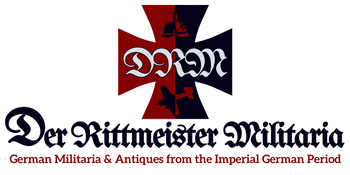Hamburg (Freie und Hansestadt Hamburg)
CLICK HERE FOR ALL PRODUCTS RELATED TO HAMBURG
Basic Information
- Official Name: Free and Hanseatic City of Hamburg (Freie und Hansestadt Hamburg)
- Capital: Hamburg
- Motto: "Libertatem quam peperere maiores digne studeat servare posteritas" (Let posterity strive to preserve the freedom won by our forefathers)
- Established: Gained status as a Free Imperial City in 1189 (retaining its independence through the German Confederation and Imperial Germany).
- Dissolution: Retained its status as a city-state within the Weimar Republic in 1918.
-
Key Symbols:
- Coat of Arms: A red castle with three towers on a silver shield.
- Flag: Red with the white castle from the coat of arms.
Geographical Overview
-
Location:
Hamburg is located in northern Germany, on the Elbe River, approximately 100 kilometers from the North Sea. -
Size:
Hamburg is one of the largest city-states in Germany, encompassing a major urban center and surrounding ports. -
Land Features:
- Elbe River: The lifeblood of Hamburg, connecting it to the North Sea and making it a hub for trade.
- Port of Hamburg: Known as the "Gateway to the World," it was one of the largest and busiest ports in Europe.
- Alster Lakes: Artificial lakes within the city, adding to its picturesque urban landscape.
Historical Timeline
-
Early Hamburg:
- 808: Founded by Charlemagne as a fortress named "Hammaburg."
- 1189: Gained status as a Free Imperial City under Emperor Frederick Barbarossa.
-
Hanseatic Era (13th–17th Centuries):
- Hamburg became a leading member of the Hanseatic League, dominating trade in the Baltic and North Sea regions.
- Flourished as a center for shipbuilding, commerce, and banking.
-
Imperial Germany (1871–1918):
- Maintained its autonomy within the German Empire, focusing on international trade.
- Hamburg’s port played a crucial role in German exports and imports, becoming a symbol of economic power.
-
Decline and Transition (1918):
- Continued as a city-state under the Weimar Republic after the abdication of the German Emperor.
Notable Rulers and Leaders
- As a Free City, Hamburg was governed by a Senate of elected officials, with leadership shared among Bürgermeister (Mayors).
-
Notable Figures:
- Heinrich Kellinghusen (1811–1872): A mayor who modernized Hamburg’s trade and infrastructure.
Military and Political Strength
-
Military Contributions:
- Hamburg contributed to the Imperial German Navy and maintained maritime defense forces.
- The city’s shipyards produced warships and commercial vessels that strengthened Germany’s naval presence.
-
Political Role:
- Hamburg’s autonomy allowed it to focus on trade, commerce, and economic policies.
- Played a vital role in Germany’s global economic ambitions, leveraging its port as a strategic asset.
Cultural Contributions
-
Architecture:
- St. Michael's Church (Michel): A Baroque landmark and symbol of Hamburg.
- Chilehaus: An Art Deco-style building reflecting Hamburg’s trade links with South America.
-
Arts and Literature:
- Hamburg fostered musical legends like Johannes Brahms and Felix Mendelssohn.
- Hosted theaters and operas, including the famous Hamburg State Opera.
-
Education and Science:
- University of Hamburg: Known for its contributions to the sciences and humanities.
- Advancements in maritime science and navigation stemmed from the city’s shipbuilding heritage.
-
Cuisine:
- Famous for Fischbrötchen (fish sandwiches), Labskaus (a sailor’s dish), and Franzbrötchen (a sweet pastry).
- Hamburg was also a key exporter of coffee and cocoa during the 19th century.
Fall of Hamburg
-
World War I (1914–1918):
- The port suffered from blockades, leading to economic hardship and food shortages.
-
German Revolution (1918):
- Hamburg retained its autonomy but transitioned to a republican city-state under the Weimar Republic.
-
Post-WWII (1945):
- Severely damaged by Allied bombings, Hamburg rebuilt itself as a major port and trade center in modern Germany.
Connections to Products
-
Maritime Memorabilia:
- Ship models, navigation tools, and items related to the Port of Hamburg’s history.
- Commemorative pieces from Hamburg’s shipbuilding industry.
-
Hanseatic Artifacts:
- Coins, maps, and trade documents showcasing Hamburg’s role in the Hanseatic League.
- Replicas of Hamburg’s iconic red castle emblem.
-
Cultural Artifacts:
- Memorabilia featuring St. Michael's Church or the Chilehaus.
- Items tied to Johannes Brahms, such as sheet music or biographies.
-
Culinary Memorabilia:
- Vintage coffee and cocoa trade advertisements, highlighting Hamburg’s global commerce.
- Recipes and tools for making traditional Hamburg dishes.









